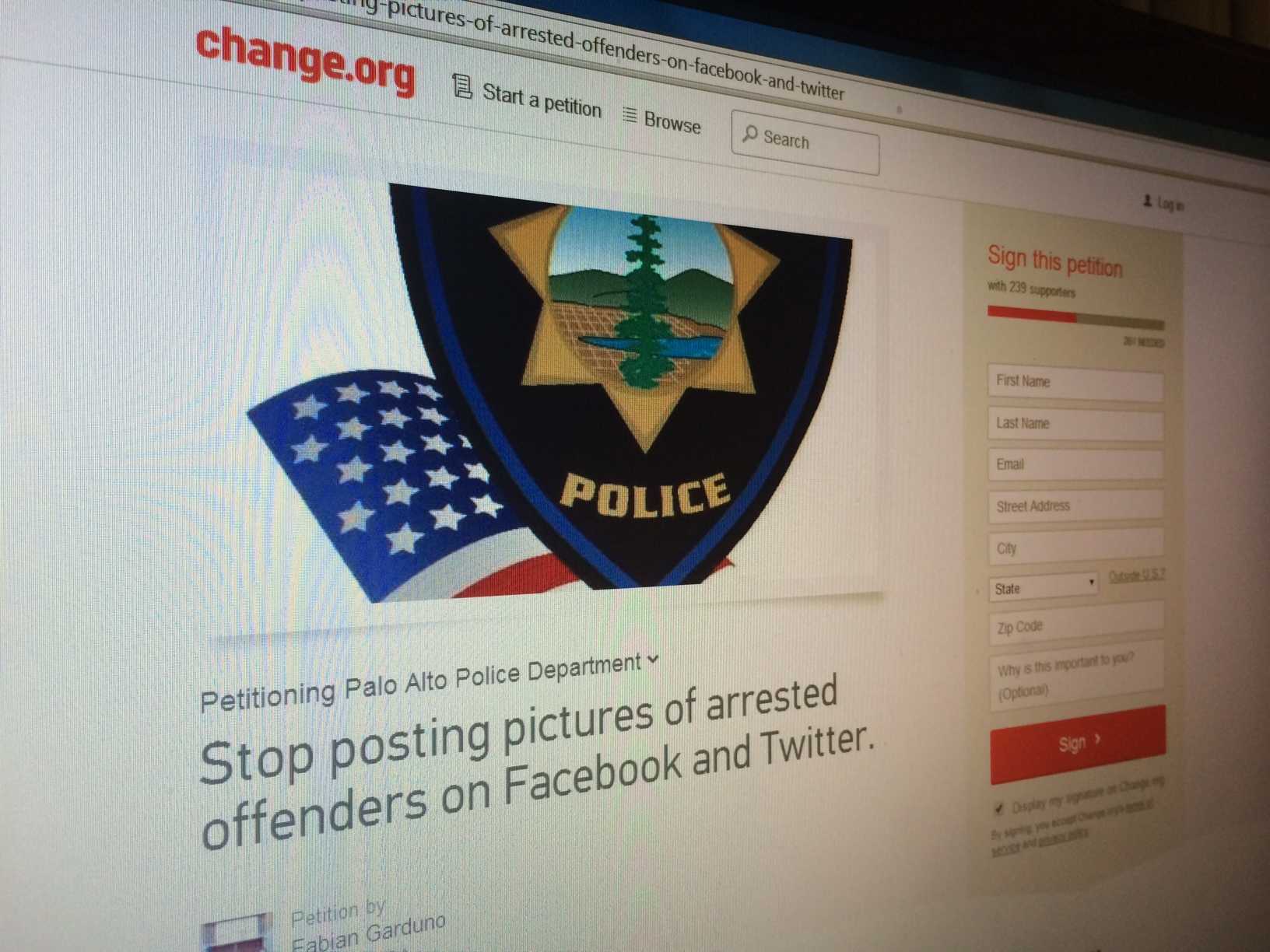
After the Palo Alto Police Department posted on its social media feeds the press release of the arrest of a Palo Alto High School student, members of the Paly community have responded with various reactions, including a petition.
The press release was posted not only on the City of Palo Alto’s website, but also on the PAPD’s Facebook and Twitter pages. The direct inclusion of the student’s photo and full name (released because the student is 18 years old) sparked the creation of a petition Sunday night to “stop posting pictures of arrested offenders on Facebook and Twitter.” An excerpt from the description of the petition, which had over 250 signatures as of this afternoon, reads as follows:
The Press Releases should be kept only on the PAPD website and off social media sites. … The PAPD should continue to post Press Releases, but in the form of short, summarized posts. A link to the full Press Release in the post should be provided to those who want to learn more about the incident. This allows the PAPD to alert the community on incidents without posting distressing pictures, but still allowing for the interested to learn more.
According to the petition creator, Paly junior Fabian Garduño, the appeal was created after the recent Paly arrest out of concerns for psychological health effects of arrested offenders.
“There are people behind these photos that have their lives totally changed when these photos are put up because everyone sees them,” senior Will Hare said.
The general reaction Garduño has received regarding the petition has “been mostly positive,” Garduño said. “A lot of people have signed it, and I’m hoping I can get above 500 signatures.”
While students feel concern for the emotional well-being of their peers, many hold differing opinions on how the PAPD should maintain a consistency with the law.
“It’s just unfortunate that he [the arrested student] is still in high school, and since high school kids can be very judgmental, it’s definitely disappointing,” junior Kelly Swanson said. “But … you can’t really distinguish between what can and can’t be posted, so I think it is fair that if you are over 18, it [the offender’s information] is public and can be posted on Facebook.”
Junior Eliza Ackroyd also voiced her own sentiments on how to maintain a balance with social media.
“They [the PAPD] want their actions to be very transparent with the community, but I also think it’s important to preserve his [the arrested student’s] privacy,” Ackroyd said. “I think it’s not fair for him to face the repercussions … from the community … and publicizing the incident isn’t necessarily a good thing.”
Many students, including junior Seth Alston and sophomore Molly Kraus, agree that instead of having the PAPD completely cut off social media posts of criminals, alternative solutions can be found.
“If he was a suspect and people still needed to look out for someone who was still at large, I think that’s different,” Alston said. “But once it all happens and he’s already booked, I think it should be pretty much internal.”
Alternatively, Kraus believes that stories on arrested students should still be posted, as long as certain information is withheld.
“I think that both the public and the police have the right to understand the information given to them,” Kraus said. “At the same time, I think that because he [the arrested student] is still a student, they [the PAPD] should hold his name and possibly just discuss the charges and the fact there was a student at Palo Alto High School who did this.”

